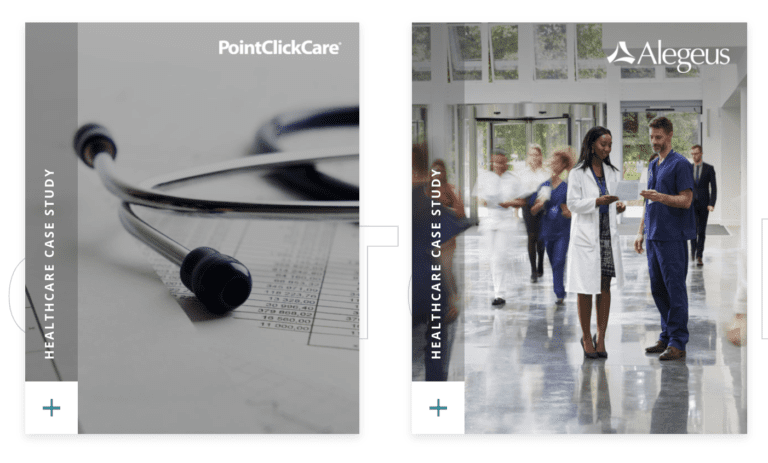Are you a healthcare marketer looking to modernize your public relations strategy and take your content marketing game to the next level? Are you hearing a lot about how you need public relations, content marketing, social media engagement and connections with healthcare influencers, in order to grow?
Today’s healthcare landscape is dynamic and rapidly changing. Shifting federal and state policy mandates, new care delivery models, the informed patient, downward pressures to reduce costs, and the promise of technology to better connect care and treat disease proactively are creating a unique inflection point unlike anything we’ve seen. At the same time, our core healthcare stakeholders are changing the way they seek, consume and share information.
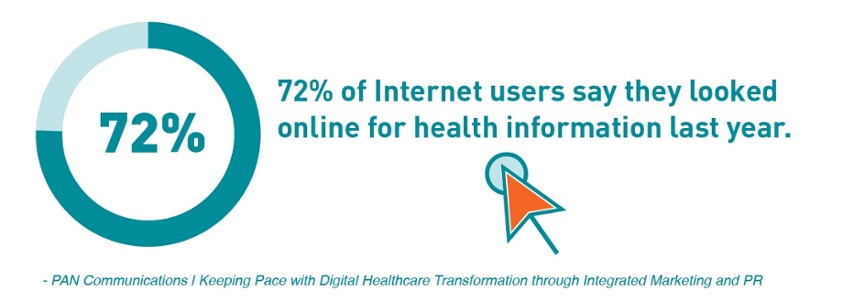
Employing a strong integrated marketing and PR strategy can be a key move to reach the next level.
Earned, shared and owned strategies all intersect and magnify each other. The difficulty remains in the million moving parts to this strategic approach. Integrated marketing and PR agencies know how to create, produce, promote and leverage a great story so you can move your healthcare brand past the infancy stages into a connected company. At this critical juncture, you can’t afford to miss out on what integrated agencies have to offer.
Healthcare PR
PR has long been utilized as part of traditional healthcare marketing strategies. But as the healthcare industry changes, it impacts how PR intersects with marketing and messaging. When done right, it can lead to powerful omni-channel communications using an integrated approach.
Healthcare Media Relations
Earned media has evolved over the years. It’s no longer pitching a few friendly editors here and there with an exciting company announcement or trend. Now, it’s about building relationships with media, bloggers and influencers that can amplify your efforts.
86% of marketers used this strategy in 2016, and most marketers were looking to double their investment in 2017.
Healthcare Thought Leadership
Patients are now responsible for more healthcare costs than ever before. With more skin in the game, patients are behaving more like consumers, conducting their own extensive research before making healthcare decisions. They take a much more holistic approach, utilizing not only the Internet but tools, portals, videos and other resources available from their health plans and employers. Just like consumers, healthcare customers now expect to be able to research, make decisions and purchase healthcare products, services and solutions, much like they do in all other aspects of their lives. Because of this, influencer relations can be a particularly effective strategy for healthcare marketers.
“Influencer marketing was rated as the fastest-growing online customer-acquisition channel, beating organic search, paid search and email marketing” in a Tomoson poll of marketing professionals.
Healthcare Crisis Communication
From data breaches to active shooter situations to mass casualty events, there’s a potential for crisis around every corner for the healthcare PR pro. You need to take an integrated approach when dealing with rapid crisis responses, which includes both PR and social media channels. Having your media channels lined up before a crisis hits is critical when circulating rapid fire responses.
To avoid a communications crisis, take the necessary steps to ensure that people are suitably proficient in media relations and across all social media channels. The entire bench of spokespeople should be taken through interactive coursework that teaches them the many nuances of working with media and market analysts. Besides overall presentation skill development, they’ll learn how to handle tough questions, and when to defer questions to someone more in the know.
Healthcare Social Media
Social media is viewed as the second most effective digital marketing tactic for customer retention purposes, behind only email.

Some hear “social media” and think only of Facebook, Twitter and maybe LinkedIn. While tweeting a few times a day on industry topics or posting daily on Facebook and LinkedIn is a viable and inexpensive way of getting messages out there, social media opportunities can extend well beyond these channels without breaking the bank.
Cambridge BioMarketing launched a social media campaign around International Rare Disease Day that targeted advocates, caregivers and the general public via social media netting 1.4M+ total impressions. Read the case study to learn more.
In particular, emerging healthcare businesses and brands have a distinct advantage when it comes to social media promotion. Why? Because active social media users love talking about what’s new. Perhaps it’s the most promising new treatment for a rare disease, or a new virtual assistant to make physicians’ documentation easier. Healthcare social media provides a powerful means of connecting with your brand’s customers, patients and advocates.
Combining your PR and social media tactics is a winning strategy. Integrated PR and social media services ensure that your brand gets the spotlight in today’s “always-on” world.
Check out our Social Media Framework to learn more about aligning your PR and social media efforts to reach customers across the buyer’s journey.
Healthcare Trends
Are you ready to act quickly and increase your brand’s thought leadership by leveraging breaking news? Trend jacking is one of the most effective tactics in the PR arsenal. It allows you to position your brand, its executives and experts as a thought leader by including your perspectives in coverage around trending industry issues. Additionally, by incorporating commentary on breaking news into social media programs, organizations can position themselves as resources on hot topics, inspiring new connections and creating urgency around issues that impact their constituents. You can hack the news cycle and react quickly to breaking news.
There is a myriad of examples on how to apply this to specific healthcare sectors. It could include topics such as the zika virus (providing information on how to avoid exposure or news on vaccines in development); CTE (sharing concussion facts and treatment options); or healthcare data breaches (discussing how best to prepare for and mitigate compromising sensitive information). You can even capitalize on trend jacking after events occur and share the knowledge via blog posts, like this biotech blog which posted on trends coming out of the BIO International Convention or this pharma blog that recaped the Digital Health Coalition Summit.
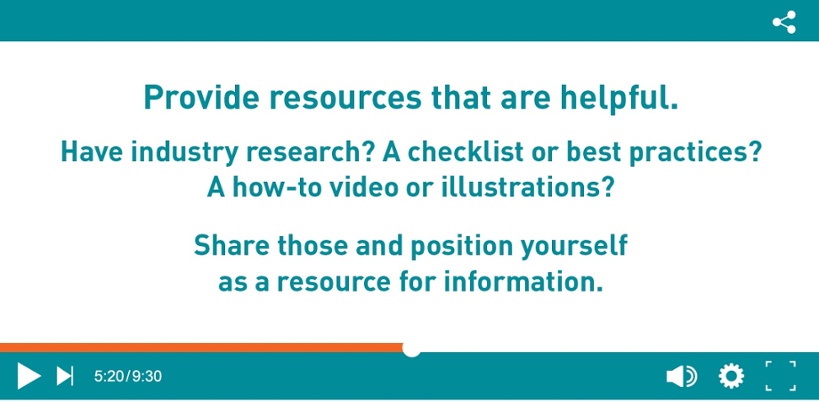
Healthcare Influencer Marketing
Over the past few years, influencer marketing has proven to be an impactful way to educate consumers about products, combat negative reviews and increase sales. With upward trending social media usage rates, more advertisers than ever are turning to high-profile influencers over traditional forms of digital advertising.
Healthcare consumers heavily value the opinions of their peers. This behavior is no different in the healthcare industry, where diagnosed or symptomatic patients turn to an online world of memes, hashtags, and patient influencers for trusted medical guidance and support.
Whether they are patients, policy makers, healthcare executives, chief medical officers, hospital leaders, analysts, media or physicians; healthcare influencers can offer a strategic advantage for your integrated marketing effort. While influencer marketing is an option in healthcare, understand the regulations that apply to your industry and formulate an approach based on your audience’s demographics, emotions and behaviors to identify the right influencer and engage them authentically.
Employee Advocacy Programs
Before you dismiss employee advocacy as an HR function, consider the potential it has on your healthcare marketing platform. Your employees can become the best influencers out there, if you do it right.
According to Ted Rubin, a leading social marketing strategist, keynote speaker, brand evangelist and acting CMO of Brand Innovators, “If you empower your employees, they’ll empower your brand. There are so many valuable ways to do it… They’re hitting exactly what you’re talking about: their biggest challenge is not getting the brand to this point to agree that it’s something valuable … One of the biggest problems is that companies talk about omni-channel going out, but they forget about omni-channel on the inside.”
Recognized or not, employees have the potential to be your brand’s biggest advocates alongside your patient advocates. The rise of social media has paved the way for businesses to create programs dedicated to employee advocacy, but the process can be daunting. This is where integrated marketing firms come into play. These firms have the knowledge and skill sets to help market your brand through your own employees.
The best way to get started is to work with an integrated marketing firm to get your program off the ground and allow it to run smoothly.
What’s the best reason to pursue an employee advocacy program? Leads developed through employee social marketing initiatives convert 7x more frequently than other leads. (Kredible via IBM)
Healthcare Content Marketing
Digital transformations are driving disruption within the healthcare landscape and are affecting how audiences receive information and engage with brands. This poses major challenges for the modern healthcare marketer and the role PR plays in healthcare today.
There are many facets to the B2B healthcare vertical – including pharma services, health information technology, and digital health services. They each face all of the standard concerns that typically impact modern content marketers – including the need to differentiate in a competitive marketplace, and questions about how to align results with business goals.
Yet, additional layers of complexity are at play for pharma and life science marketers given the unique considerations that come with caring for people with illnesses or injuries and communicating about life-saving therapies and technologies manufactured by their companies. Not to mention that there’s no room for factual errors or marketing missteps in an industry where human lives can hang in the balance. They all operate in a highly regulated industry monitored not only for product safety and efficacy but also labeling and messaging practices.
Even with all that being said, healthcare marketers can use content marketing to their advantage in all its forms: visual, audio, video and the written word. It’s all about providing great content that is visually appealing, informative, non-promotional of a brand or product/service, and that can be shared at the right time through the right channel.
Alegeus launched an integrated campaign to create awareness, educate and provide the inside scoop on consumer-driven healthcare. Read the case study to find out more.
Healthcare Buyer Personas & Messaging
When we think of successful integrated marketing and PR campaigns, we often focus on the end product, the measurable results, the overall impression and the impact. Yet it’s the foundational building blocks — messaging, buyer personas, content strategies, competitive analysis — that are essential to create long before any campaign is hatched and, subsequently, executed for an integrated campaign to be successful.
People buy from people and from companies that they know, trust and with which they share a common connection. It’s been that way for a long time. And, in today’s world of healthcare marketing and storytelling it’s even more critical: We’re talking about healthcare, a topic that is highly personal and deals directly with people’s health and well-being. As such, the time and resources they put into their health to live their lives on their term is precious.
Brands can and should tap into the power of storytelling to inspire, connect with and serve their audiences to build those important relationships and earn trust. First and foremost, whether you are a big or small company in health IT, digital health, pharma, medical devices or another facet of healthcare (or technology), storytelling requires having a solid brand architecture and message foundation. It also requires knowing your audience and your competitors, as well as understanding you can’t simply push information to an audience, a list or a group of desired brand advocates, customers or prospects. You need to engage with them, establish a two-way dialogue and create some real value for them and your company.
Healthcare Inbound Marketing
Inbound is a framework every healthcare marketer should be adapting. According to Hubspot, attracting customers through relevant and helpful content, inbound marketing lets potential customers find you. Don’t fight for customers’ attention. Create content targeted to well-thought-out personas and watch the inbound leads come in. When done correctly, using this as part of an inbound approach is more cost-effective than outbound tactics.
By integrating messages, content and social with marketing automation software, PR is becoming a powerful tool to drive prospective customers down through the sales funnel for healthcare organizations and beyond. Together, public relations and inbound marketing drive awareness, build trust and increase sales. While seemingly different, both PR and inbound marketing rely heavily on quality content creation. For this reason, healthcare marketers should combine these efforts as a single task force.
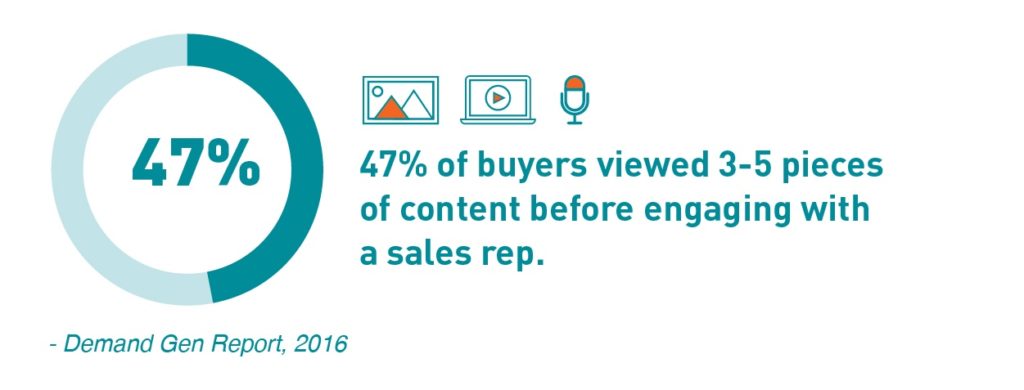
Healthcare Email Marketing
According to the Direct Marketing Association (DMA) and Demand Metric surveys of U.S. marketers, email had a median ROI of 122 percent in 2016. By the end of 2017, the number of email users kept rising to a staggering 244.5 million. This statistic is sufficient to highlight the importance of email marketing.
You are 6x more likely to get a click-through from an email campaign than you are from a tweet. (Campaign Monitor, 2016)
Leverage earned media efforts in a content strategy through your email campaigns. If your PR firm just scored coverage for your brand in Modern Healthcare, they should then promote this, as well as lift specific stats or quotes from the article to maximize the value of being cited as an expert source within emails. Using email workflows with links to optimize landing pages, blogs and premium content, combined with awards, tradeshows, press releases and media efforts will take your campaigns to the next level. When these tactics revolve around a central theme, or are part of a coordinated event marketing effort, they can make your content strategy even more effective.
Of course, any marketer in the healthcare sector needs to be well schooled in privacy issues and being HIPAA compliant. Remember the HIPAA privacy basics and proceed with caution, but don’t be frightened by this extremely effective marketing channel for healthcare-related industries.
Healthcare Creative Services
Integral to every campaign is smart, creative mapping to your persona base to determine what effectively hits your audience, how it hits your audience, and where it hits your audience. A large part in getting all three of these in place comes down to your creative throughout all your inbound, social and PR efforts. Having captivating creative to showcase your brand’s messaging can take your integrated campaign to new heights — if you have the right tools, skills and experience within your team.
Healthcare Creative Design
Great design does more than grab an audience’s attention; it also ensures they thoroughly absorb your complete message. Effective healthcare creative requires high-quality graphic design. Brands communicate with consumers using colors, fonts, websites, photography and logos. If a potential customer is turned off by low-quality visuals on your website or that stock photo of businessmen shaking hands that you posted on your Twitter … you’ve lost them, and you may never get them back.
37% of marketers said visual marketing was the most important form of content for their business, second only to blogging (38%).
Spend the money up front for high-quality design and visual consistency across your integrated marketing campaign. It is cheaper to do it correctly the first time than to catch up with your competitors after losing sales.
Healthcare Content Asset Development
Healthcare related topics lend themselves to content such as eBooks, infographics and shareables. And it’s a fact that visuals get viewed, liked, commented on and shared more than text-based posts.
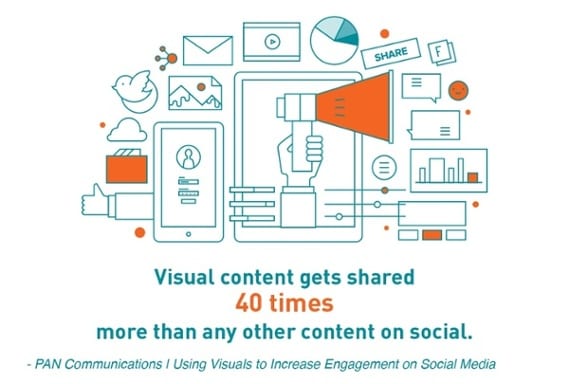
Infographics have visual appeal and make boring content fun to read. Healthcare is complicated. Use infographics to visually explain how something works. It might just be the difference in how people ultimately see, share and read your content.
Infographics are liked and shared on social media 3x more than any other type of content. (Mass Planner, 2015)
Healthcare Video Creation & Production
Video should be part of every healthcare marketer’s content strategy. But don’t run right out and hire a production company to make that perfectly-polished video. Develop the right type of healthcare video content to truly drive your integrated marketing strategy.
Streaming Video – YouTube is a giant, but Facebook’s 4 billion daily video streams is the number that’s only going to continue to grow with time. 35 percent of marketers using interactive video extensively saw increased conversions, and 25 percent saw an increase in sales. It’s time to embrace digital change.
Educational Videos – People love to learn quickly. Quick tutorials are a favorite across social media platforms and are a perfect fit for healthcare related subject matter.
There’s a broad spectrum of topics on big data and healthcare analytics. Those include technologies on the rise – machine learning, crowdsourcing data, predictive analytics – some of the blocking and tackling that all health entities must accomplish – driving results with analytics, proving investment value – as well as the cultural challenges of choosing and working with technology vendors, winning over clinicians, and managing expectations amid the hype.
Healthcare SOV Analysis
When we measure SOV, we analyze the percentage of all the earned media coverage a company receives within their industry as compared to their competitors. While analyzing SOV, we consider the following to be earned media:
- Bylined/contributed articles
- Feature articles and blogs
- Mentions
- Quotes
- Syndicated media
SOV is important because, as the saying goes, knowledge is power. Constant monitoring of media coverage enables a company to act proactively instead of reactively. It shows them their impact on leading the conversation and staying top of mind versus competitors.
Healthcare Insight & Buyer Behavior Analytics
Healthcare data and analytics form a veritable tsunami of information. With big data and precision medicine in full swing, care delivery systems need to be effectively redesigned from the ground up to be based on data if the major trends such as predictive analytics and population health are ever going to live up the potential.
Assessments, Reporting, Analytics
Campaigns integrating 4 or more digital channels will outperform single- or dual-channel campaigns by 300 percent. So, it’s critical to have your reporting and analytics lined up for your integrated marketing efforts.
Healthcare executives evaluating analytics tools should treat them similarly to the way they would any other major IT purchasing decision. When it comes to big data, CIOs should really know exactly what they hope to accomplish with the investment – from the onset – and avoid implementing bright shiny objects just for technology’s sake.
Now, more than ever, healthcare marketing can’t succeed without an integrated growth strategy.
Patient experience is key. Effective storytelling, media relations and both traditional and digital channels can help you form an emotional connection with prospects.
It requires coordination, innovation and analytics, but it’s possible with a unified effort. Supported by a single team with common goals, this approach will bring you speed, agility and efficiency as you launch increasingly more effective integrated healthcare marketing strategies.
To get started, take an inventory of your resources. It might make sense to tap into an outsider’s perspective, such as an integrated agency, to pull the pieces together, working in partnership with your existing team or in place of disparate agencies operating in silos.
Interesting in executing an integrated marketing PR strategy for your healthcare brand? A PR agency can help. Take a look at some of our success stories.


